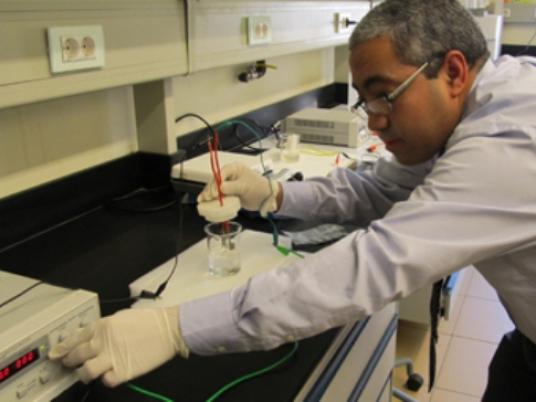
New research has begun at AUC’s Energy Materials Laboratory, where scientists are attempting to efficiently turn solar energy into hydrogen fuel, a renewable energy carrier with three times the potency of gasoline.
An energy carrier is energy that is converted into another form so that it can be use in a variety of different ways.
Rather than simply using solar energy to produce electricity, the production of hydrogen fuel means that the energy can be easily stored and transferred, like natural gas, and later used, not only to power electric devices, but combustion engines as well.
However, unlike gasoline or natural gas, hydrogen fuel has zero carbon emission when burned — its only byproducts are water, heat and energy — making it a strong candidate as a renewable energy carrier of the future.
Nageh Allam, the physics professor who is heading up the research, just started his first semester at AUC this year. Previously, he was conducting the same research at MIT in the US. However, an enticing research grant from AUC was enough to seal his ambitions to return to Egypt to give back to the science community, something he says he has wanted to do since the revolution started last year.
Hydrogen fuel is created by using solar energy to break the chemical bonds of water to create hydrogen and oxygen. According to Allam, the technology to do this has already been developed, albeit with relatively low, though promising, efficiency.
“Now, the crucial part of the research is to produce the perfect material to absorb sunlight and break the chemical bonds efficiently, which we are now trying to achieve using nanotechnology, which we have at AUC,” says Allam. “It is very achievable.”
Nanotechnology allows physicists to perfect detailed material compositions by constructing them atom-by-atom.
However, according to Allam, not only can this technology be used to lower carbon emissions by switching to hydrogen fuels, but it can also be potentially used to lower the amount of carbon already in the atmosphere by converting it back into natural gas.
When hydrogen fuel is burned, it produces water vapor, which can be combined with condensed carbon from the atmosphere to recreate natural gas.
“The vision is to eventually be able to set up renewable energy power plants that are able to produce various forms of energy carriers in an environmentally friendly way,” says Allam. “These scientific advancements, used in combination with a variety of other forms of renewable energy production, like wind and solar electricity, are the seeds of the future of energy.”
Allam says that this technology has already been produced to high efficiency standards in countries like Germany, but strong competition in renewable energy markets means that the details of the technology are not yet public.
“While competition is healthy, the goal is a cleaner Earth, and sometimes I worry that the business side of things may stand in the way of that,” he says.
Currently, one of the biggest hindrances to the AUC research project is funding, something which Allam and his team are in the process of seeking.
“While AUC has been very generous, this type of research is expensive,” he says. “There is enough funding to ensure that research progresses, however not as much as we would like, but that just takes time, and results,” he says.
Meanwhile, with the help of professor Allam, AUC is working establish diplomas in solar energy that will allow students to specialize in the development, design and testing of solar energy devices.
“The more high quality scientists we have working towards these goals, the faster the results will be achieved,” says Allam. “Moving to renewable energy sources is something that will have to be approached from all angles. Educational programs are just as important as research and business investments.”




